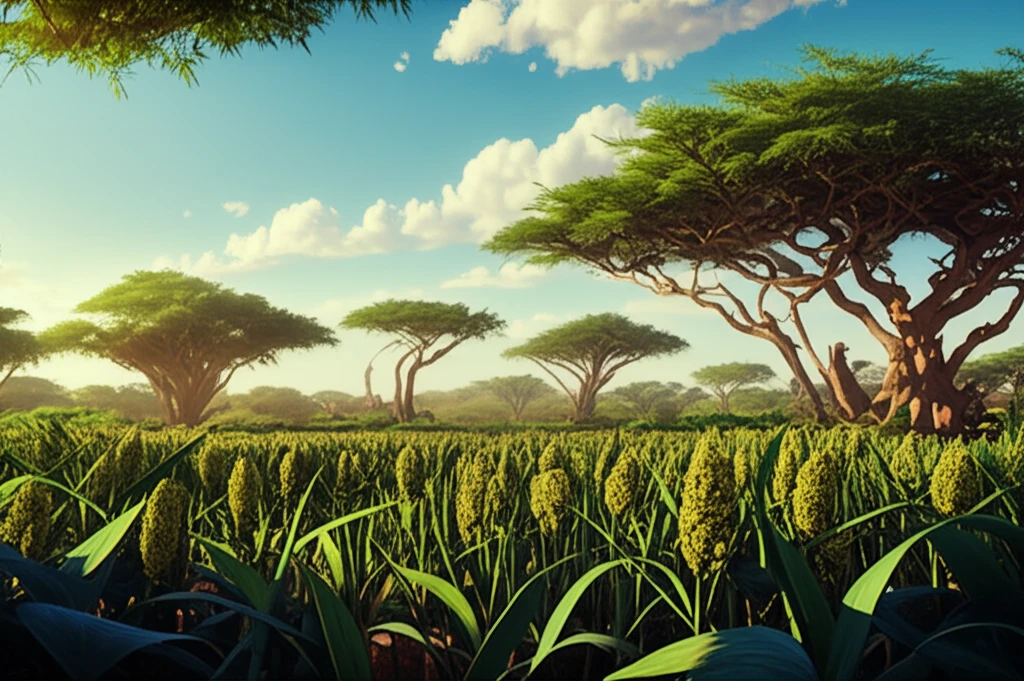
Unlock the Secrets of Agroforestry: How Acacia Senegal Boosts Sorghum Yields
"Discover the ancient technique of agroforestry and its modern applications for sustainable agriculture, focusing on the symbiotic relationship between Acacia Senegal and sorghum cultivation."
In the heart of the Sahel region, where fertile land is a precious commodity, innovative agricultural practices are essential for survival and sustainability. Among these, agroforestry—the integration of trees and shrubs into agricultural systems—stands out as a promising solution. This approach not only combats soil degradation but also enhances crop yields and promotes biodiversity.
One remarkable example of successful agroforestry is the cultivation of sorghum alongside Acacia Senegal trees. This symbiotic relationship, deeply rooted in traditional farming practices, offers a natural and effective way to improve soil fertility and boost sorghum production. Unlike conventional methods that rely on costly chemical fertilizers, this approach leverages the inherent properties of Acacia Senegal to create a self-sustaining ecosystem.
This article delves into the science behind this agroforestry technique, exploring how Acacia Senegal trees enrich the soil, influence the microclimate, and ultimately contribute to higher sorghum yields. We’ll examine the findings of a detailed study conducted in Niger, revealing the practical benefits and broader implications of integrating trees into agricultural landscapes.
Why Acacia Senegal is a Game-Changer for Sorghum Farmers?

Sahelian soils are notoriously low in fertility, posing a significant challenge for farmers. Traditional methods of soil improvement often involve spreading organic manure or applying artificial fertilizers. However, the economic constraints faced by many households in the region limit their ability to adopt these practices. Options that don't require significant monetary investment, such as integrating natural woody vegetation into cultivation, offer a more sustainable and accessible alternative.
- Nitrogen Fixation: Acacia Senegal enriches the soil with nitrogen, a vital nutrient for plant growth.
- Soil Improvement: The tree's litter fall and root decomposition enhance soil structure and fertility.
- Microclimate Regulation: Acacia Senegal provides shade, reducing soil temperature and evaporation, which benefits sorghum plants.
- Windbreak: The trees act as windbreaks, protecting sorghum crops from harsh winds and reducing soil erosion.
- Biodiversity: Agroforestry systems support a greater diversity of plant and animal life, contributing to a healthier ecosystem.
Embracing Agroforestry for a Sustainable Future
The integration of Acacia Senegal into sorghum farming systems presents a promising pathway towards sustainable agriculture in the Sahel region. By harnessing the natural benefits of this tree species, farmers can improve soil fertility, boost crop yields, and reduce their reliance on costly chemical inputs. This approach not only enhances food security but also promotes environmental sustainability and resilience in the face of climate change. Embracing agroforestry practices like these is essential for building a more sustainable and prosperous future for farming communities in the Sahel and beyond.
